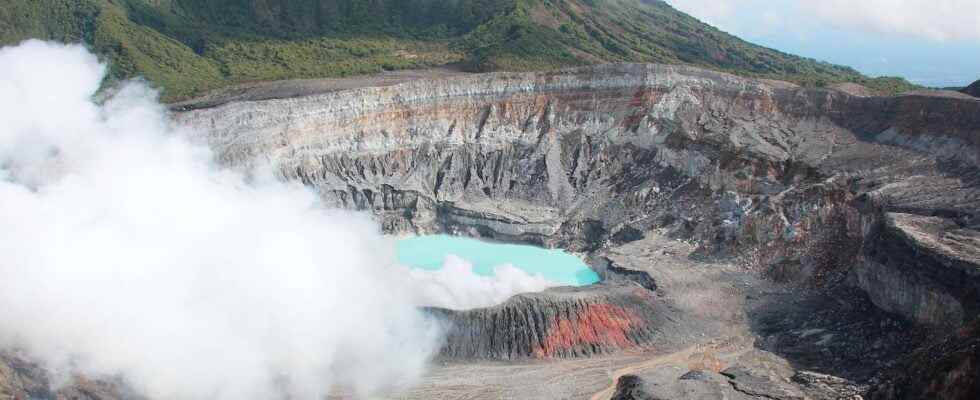Some environments on Earth are unmistakably similar to those that may have existed on Mars in the past. And in these environments, researchers find living organisms endowed with formidable adaptive capacities. As on the side of Laguna Caliente, in the hollow of the Poás volcano in Costa Rica.
You will also be interested
[EN VIDÉO] Accidental discovery of extreme life forms While drilling a platform of floating ice, scientists made an unexpected discovery: life was hiding at the bottom of the water.
Ultra acidic water, metals toxic, temperatures that fluctuate between the twenties and hundreds of degrees Celsius and even « eruptions groundwater » which emit steam and ash and expel rocks. The Laguna Caliente, a lake set in the crater of the volcanoPoás, Costa Rica is arguably one of the most hostile environments on Earth.
It is however there that researchers at the University of Colorado in Boulder (United States) studied some populations of germs . From extremophilic microbes who have developed original strategies to enable them to live in conditions that are ultimately quite similar to those that the astronomers describe around hot Springs that existed for billions of years in the past of the planet Mars.
Various strategies to survive extreme conditions
Already in 2013, a team had discovered that this lake was home to only one speciesmicrobial, of the kind Acidiphilium. After one series of eruptions, in 2017, the researchers returned to observe the possible changes induced in the populations. They noted an increase in biodiversity . But still a strong dominance of bacterium Acidiphilium.
It is ultimately a DNA sequencing of organisms contained in a sample from the lake which showed that these bacteria have a wide variety of biochemical abilities that help them tolerate the extreme and even changing conditions in which they evolve. “We did not expect so much diversity given the low biodiversity found in the lake.commented Justin Wang, the lead author of the study.
This work therefore shows how life as we know it could exist and develop in hydrothermal environments as it also existed on Mars. On the rim of the Jezero crater where the Perseverance rover touched down almost a year ago, for example. “But, say the researchers, this still does not answer the question of whether life ever appeared on the planet. red planetor if it resembles that which developed on Earth”.
Interested in what you just read?
